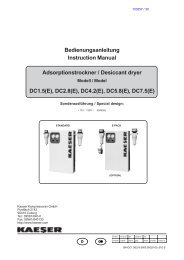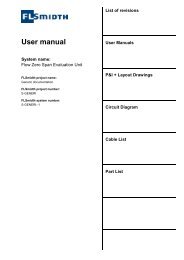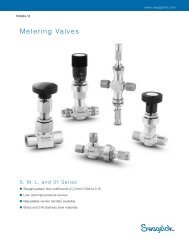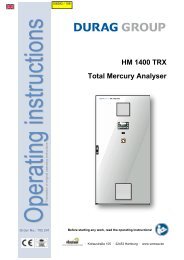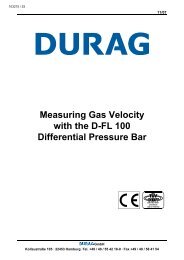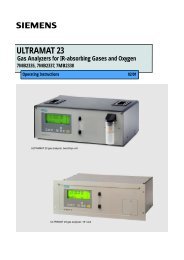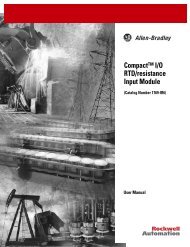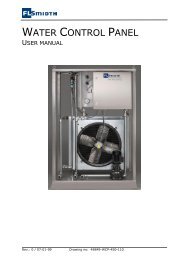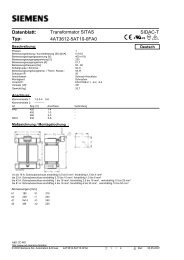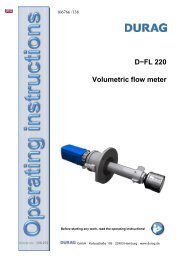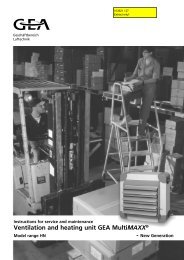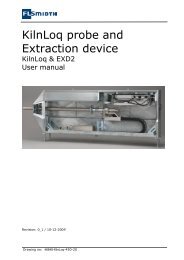EC/ECS
EC/ECS
EC/ECS
Create successful ePaper yourself
Turn your PDF publications into a flip-book with our unique Google optimized e-Paper software.
12Analysentechnik mit System8 SUPPLY CONN<strong>EC</strong>TIONS8.1 HOSE CONN<strong>EC</strong>TIONSThe hoses for the heat exchangers are laid out as per Figure 3.NOTE!Do not mix up the hose connections; the inlet and outlet connections of the heatexchangers are marked with arrows;Ensure that the connections are sealed adequately;To ensure free removal of the condensate, ensure that the listed diameters for thecondensate removal lines are not reduced!The connection for sample gas inlet and outlet happens on the upper part of the heat exchangers. Forpossible connectors see technical data (3.).⎯⎯ ⎯ Correspondingly tube or hose connectors are optional available by M&C ⎯⎯ ⎯Ensure that the connections are sealed adequately by noting the following:⎯⎯ ⎯ Duran glass heat exchangers with connections GL 18-6 respectively GL 25-12• Before assembly, check the GL coupling rings to see if the PTFE/silicon locking rings have beendamaged.• To grant a functional and unproblematic mounting we recommend to use union pieces with taperpipe thread type R according to DIN 2999/1 in connection with suitable sealing tape.• The sealing rings should be installed with the PTFE side facing the medium.⎯⎯ ⎯ PVDF respectively stainless steel heat exchangers with G 1/4“i respectively G 3/8“i• The correspondingly dimensioned tube respectively hose couplings with threaded connectionshave to be screwed in with PTFE thread sealing tape.NOTE!When fixing the connectors in the PVDF heat exchanger hold up with a wrench atthe pane of the bolt head!⎯⎯ ⎯ Option: stainless steel heat exchanger with NPT• The heat exchangers with NPT threaded connectors are marked with circulated notches.• The NPT thread must be screwed in with sealant or fixed with adhesive.In the standard configuration, the tubes for removal of condensate are connected directly to the heatexchangers. These protrude with the GL 25-12 tube connectors* (Duran glass heat exchanger)respectively with G 3/8“* thread joint (PVDF or stainless steel heat exchanger) above the base plate ofthe cooler casing (Fig.2).Condensate removal is done by customer according to the type of operation with:- Automatic float-type condensate traps AD-... only for over-pressure operation;NOTE!Stainless steel heat exchangers with G 3/8“ thread joint can be directly fitted upwith the float-type condensate trap AD-SS by means of a thread adapter partnumber FF 11000 (1/2“ NPT to G 3/8“i). By this wall mounting of the AD-SS unitisn’t necessary!- Condensate collector container that is emptied manually;- External peristaltic pump.⎯⎯ ⎯ Option: automatic condensate removal with peristaltic pump SR25.1Operating Instructions 3-4.1-ME 9501 - Electric Gas Cooler <strong>EC</strong>/<strong>EC</strong>SSubject to technical modifications.© M&C May 2002 Reproduction of this document or its content is not allowed without permission from M&C.



